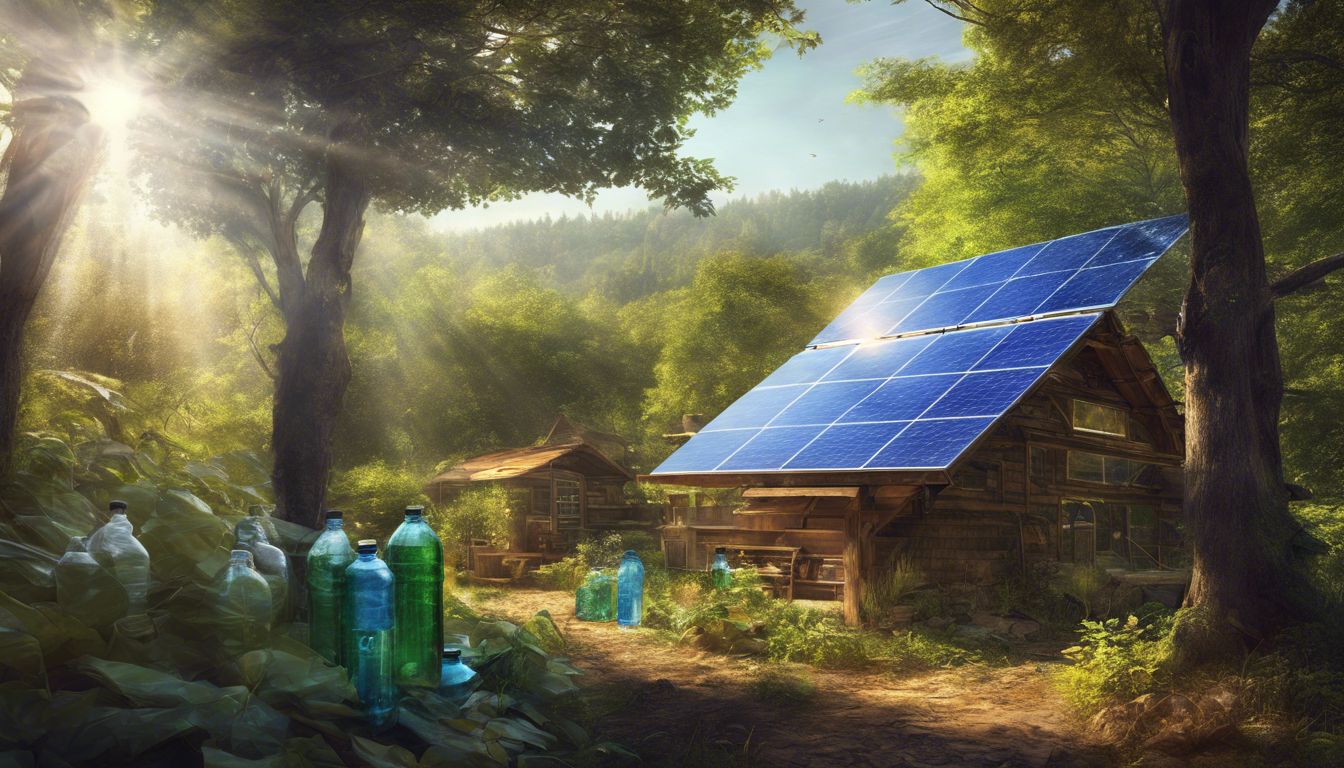
Searching for a creative way to employ solar power in a eco-friendly fashion? A clever approach is to construct solar panels using recycled plastic bottles, presenting an innovative perspective on renewable energy.
This blog will guide you through the simple steps of building your solar panel from materials already at hand. Let’s turn trash into treasure and light up our world!

Building a Solar Panel from Recycled Materials
Grouping similarly sized solar cells and connecting them with tabbing wire is the first step in creating a DIY solar panel from recycled materials. One approach to utilizing recycled materials for your solar panel is the Soda Can Solar Panel method, which provides an eco-friendly and cost-effective alternative to traditional photovoltaic panels.
Grouping similarly sized solar cells
Making a solar panel from recycled materials is a smart way to use solar energy. You can help the environment and create your source of power.
- Find solar cells that are about the same size. This makes sure they work well together.
- Ensure each cell is clean and free of damage. This helps it make electricity well.
- Use a volt meter to check if the cells generate electricity. Cells that work will make your panel powerful.
- Put the same-sized cells in rows. This step makes wiring them together easier.
- Glue the cells onto a backing made from recyclable materials. Using zero-waste products supports green building.
- Connect each cell using a tabbing wire. Careful wiring helps move electricity safely.
Connecting the panels with tabbing wire
Connecting solar panels with tabbing wire is key to making them work. You need the wire to link up the cells and get them ready to create power.
- Cut the tabbing wire to fit across each solar cell. Make sure it’s long enough to reach from one end of a cell to another.
- Use a soldering iron to heat the ends of the tabbing wire. This will help you attach it to the solar cells properly.
- Lay a strip of tabbing wire across each solar cell. Position it carefully so it does not cover too much of the cell’s surface.
- Solder the tabbing wire onto each cell. Touch the soldering iron to where the wire meets the cell, melting the solder there to stick them together.
- Repeat this for all your cells. Go slowly and make sure they are all done right so they last longer.
- Connect all your cells in a row with a tabbing wire between them. This makes one big panel out of many small cells.
- Test connections as you go. Check if electricity flows through each one well, so you know your panel will work when you’re done.

Utilizing Recycled Materials: The Soda Can Solar Panel Approach
To create a solar panel from recycled materials using the soda can approach, you will need to gather used soda cans. Start by cutting the cans open and flattening them out. These flattened aluminum sheets can act as an absorber plate for the solar panel, efficiently capturing sunlight and converting it into energy.
The black surface of the inside of the cans is excellent at absorbing light and heat, making it ideal for this purpose. By repurposing these discarded items into a functional component of a solar panel, we not only reduce waste but also contribute to sustainable energy production.
Next: “Final Touches on Your DIY Solar Panel”
Final Touches on Your DIY Solar Panel
- Final Touches on Your DIY Solar Panel
- Attach the solar cells to the backing board using a strong adhesive, ensuring they are evenly spaced and well-secured.
- Connect the solar cells in series with tabbing wire, soldering the connections carefully to ensure efficient energy transfer between cells.
- Encapsulate the solar panel with a weatherproof sealant to protect it from environmental elements such as moisture and UV radiation.
- Mount the completed solar panel in a location that receives maximum sunlight, such as rooftops or open fields, to optimize its energy-generating potential.
Conclusion
In conclusion, making a solar panel from recycled materials is an innovative way to promote sustainability and reduce waste. By repurposing materials like plastic bottles and aluminum cans, we can contribute to a more environmentally friendly approach to solar energy production.
Initiatives that focus on using recycled materials for solar panels offer promising opportunities not only in reducing environmental impact but also in creating new job prospects through recycling.
Taking small steps towards utilizing waste for renewable energy sources can make a big difference in building a more sustainable future for our planet.
FAQs
How do recycling and energy efficiency connect with solar panels?
Recycling cuts down waste and uses less resources. When you recycle materials for solar panels, you help the environment and make energy sources like sunshine work better to power things like hot water in homes.
What kind of old stuff can be turned into parts for a solar panel?
Old batteries, bits of concrete, and broken glass are some rubbish items that can be turned into parts for creating alternative energy sources with solar technologies.
Are roofs and pavements good places to put these recycled solar panels?
Absolutely! Roofs get lots of sun which is perfect for solar panels while special pavements can also have these panels built into them.
Does making my recycled solar panel help the planet?
For sure! It lowers environmental impact by using stuff that would otherwise be trash while giving you clean energy without burning fuels or making pollution.